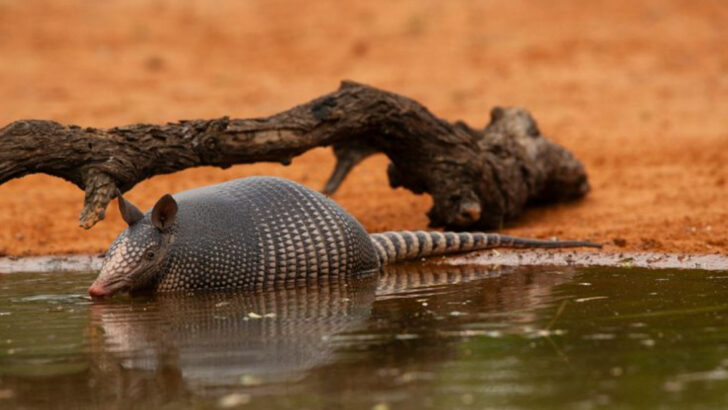Missouri’s wildlands are teeming with creatures that will leave you in awe. From thick, green forests to tranquil riverbanks, this state is home to some of nature’s most fascinating wildlife.
Here, animals roam free, from elusive predators to colorful birds, each with a unique role in the ecosystem. Whether you’re spotting a rare species or witnessing a familiar one in its natural habitat, the thrill of discovery is always around the corner.
Nature lovers and adventure seekers alike will find Missouri’s wildlands an untamed treasure chest of biodiversity. Every hike, every quiet moment by the water, is a chance to connect with the untamed beauty of this place.
Get ready to meet 23 amazing animals that make Missouri’s wildlands their home—creatures that will spark your imagination and fuel your love for the natural world.
Eastern Gray Squirrel
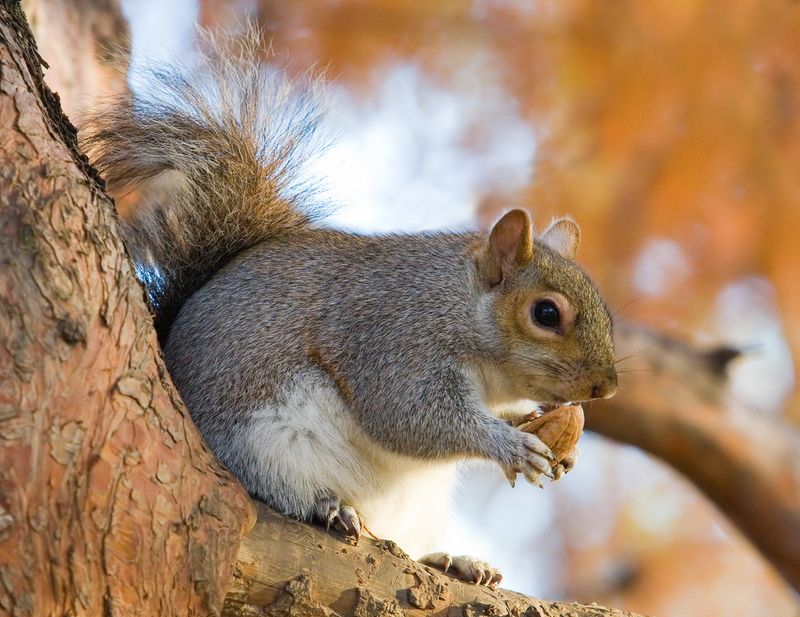
The Eastern Gray Squirrel is a common yet captivating resident of Missouri’s forests. Known for its acrobatic prowess, this squirrel can leap significant distances between branches, its bushy tail providing balance.
In Missouri, these squirrels are often seen gathering acorns in the fall, preparing for the colder months ahead. Their alert eyes and keen senses make them adept at avoiding predators.
Curious by nature, they add a lively touch to the forest environment, making each woodland walk an engaging experience.
American Bald Eagle
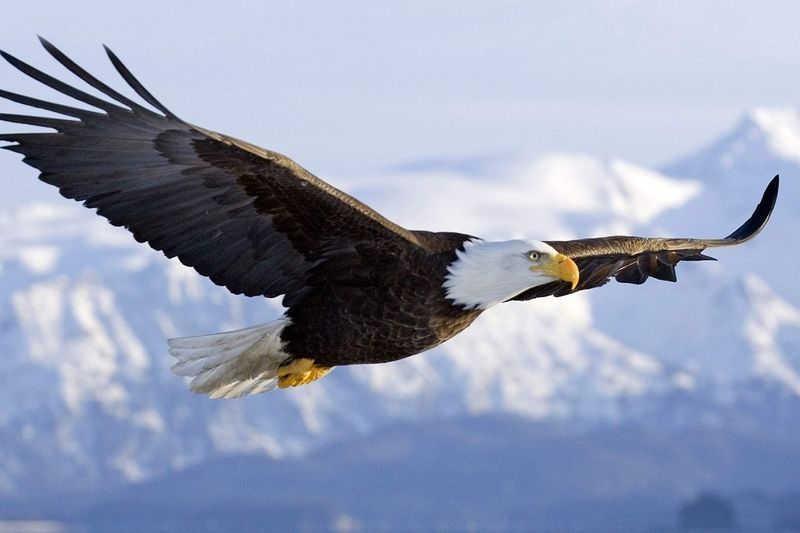
Majestic and awe-inspiring, the American Bald Eagle is a sight to behold in Missouri. Often seen soaring over large bodies of water, these eagles are expert hunters.
With keen eyesight, they easily spot fish and other prey from high above, swooping down with precision. Their nests, known as eyries, are built high in sturdy trees, reflecting their need for safety.
Observing this national symbol in the wild is a thrilling experience, promising photographers and nature lovers a rewarding view.
White-tailed Deer
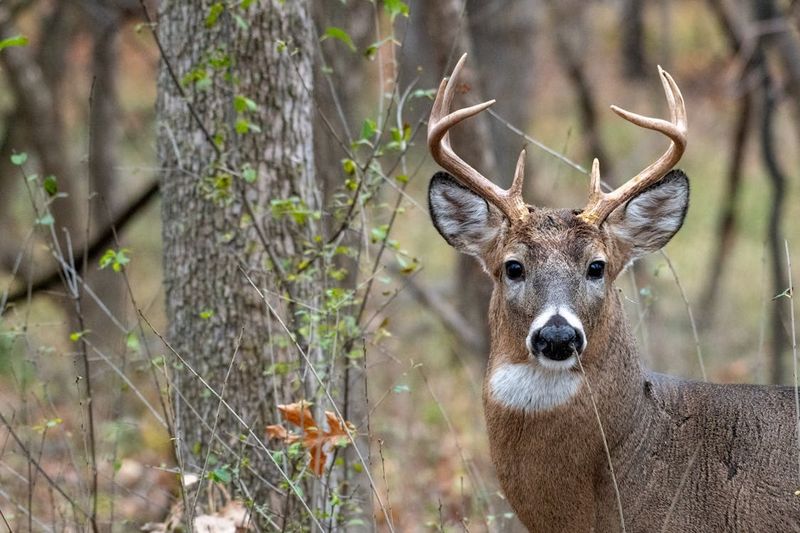
The White-tailed Deer, with its elegant stance, is a frequent inhabitant of Missouri’s meadows and forests. Known for its speed and agility, this deer gracefully navigates through wooded areas.
During the early morning or at dusk is the best time to spot these deer, as they move silently in search of food. Their distinctive white tail is a well-known signal used to alert other deer of potential danger.
Capturing the serene beauty of these creatures in their natural habitat is truly a magical experience.
Ozark Hellbender
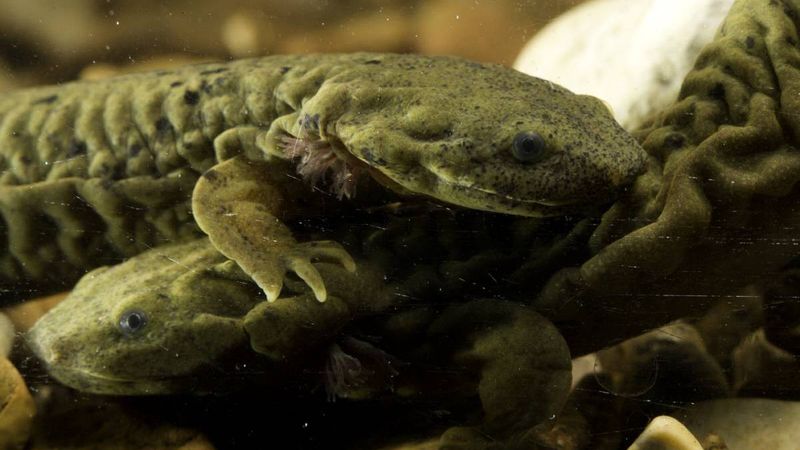
The Ozark Hellbender, a unique amphibian, resides in the clear, cool streams of southern Missouri. Its flattened body and wrinkly skin help it navigate swift underwater currents.
Hellbenders play a vital role in the ecosystem as both predator and prey, maintaining a balanced aquatic environment. They breathe primarily through their skin, which requires clean, oxygen-rich water to thrive.
Though elusive, spotting an Ozark Hellbender is a rewarding discovery, highlighting the ecological diversity of Missouri’s waterways.
Red Fox
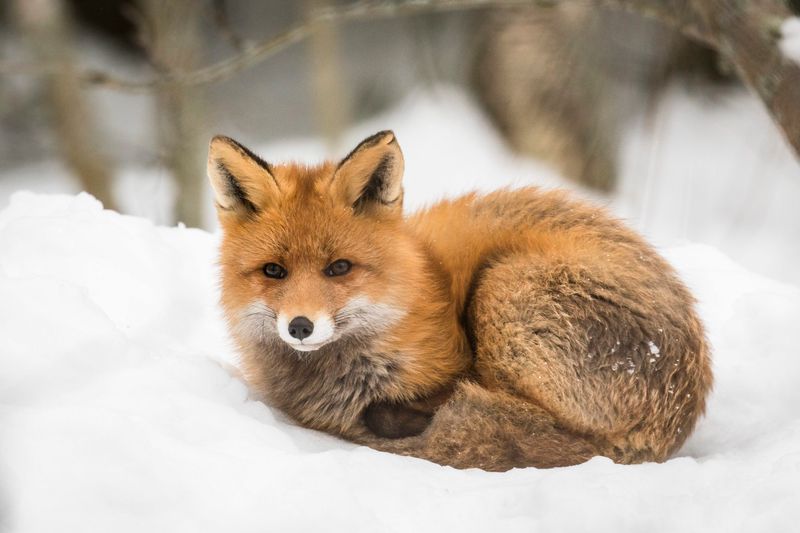
Stealthy and intelligent, the Red Fox is a charming inhabitant of Missouri’s forests and fields. With its vibrant reddish fur, this fox is easily recognizable and often spotted at dawn or dusk.
Its keen sense of smell and hearing make it an adept hunter, preying on small mammals and birds. The Red Fox is also known for its cunning behavior, often outsmarting larger predators.
Observing a Red Fox in its natural setting offers a glimpse into the adaptive strategies of wildlife in Missouri.
Northern Bobwhite Quail
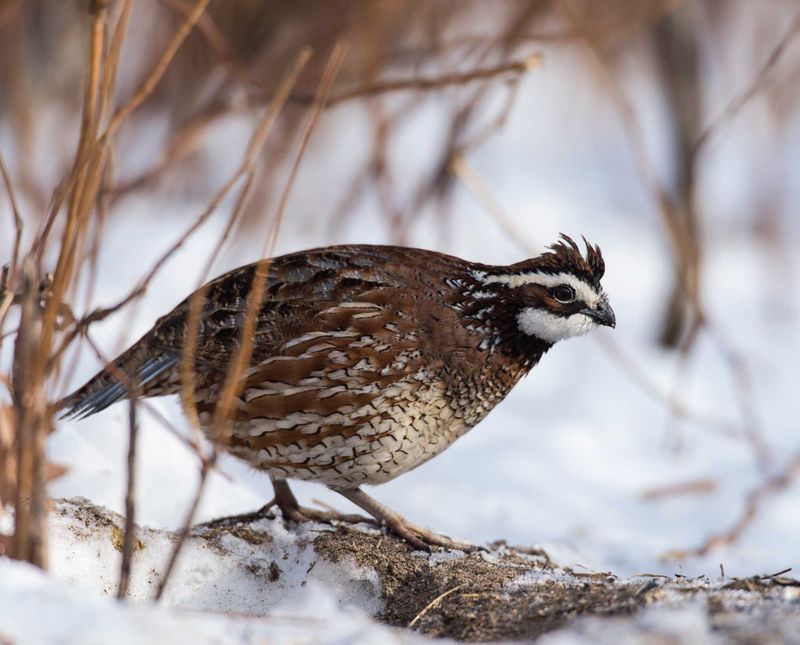
The Northern Bobwhite Quail, a ground-dwelling bird, is a familiar sight in Missouri’s open fields and grasslands. Sporting a distinctive white throat and eye stripe, these quails are masters of camouflage.
Their call, a clear ‘bob-white,’ is a signature sound during the breeding season. Quails often travel in coveys, or small groups, which provide protection from predators.
Witnessing the subtle beauty and social dynamics of these birds enhances any excursion into Missouri’s natural spaces.
Missouri Mule
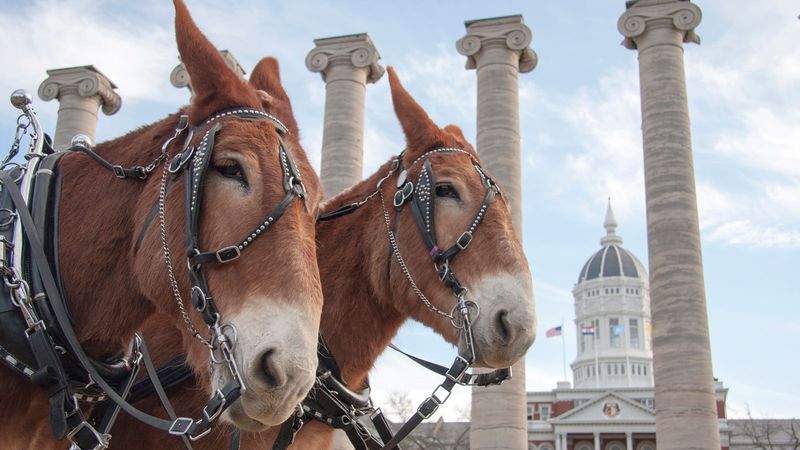
Symbolic of strength and endurance, the Missouri Mule is a well-known fixture in the state’s rural areas. Known for its hardworking nature, this mule is a reliable companion on farms and in fields.
Its strong build and sure-footedness enable it to navigate rough terrains with ease. Missouri Mules are also known for their intelligence and gentle temperament, making them a favorite for laborious tasks.
Encountering these mules offers insight into Missouri’s agricultural heritage and the enduring bond between humans and animals.
Great Blue Heron
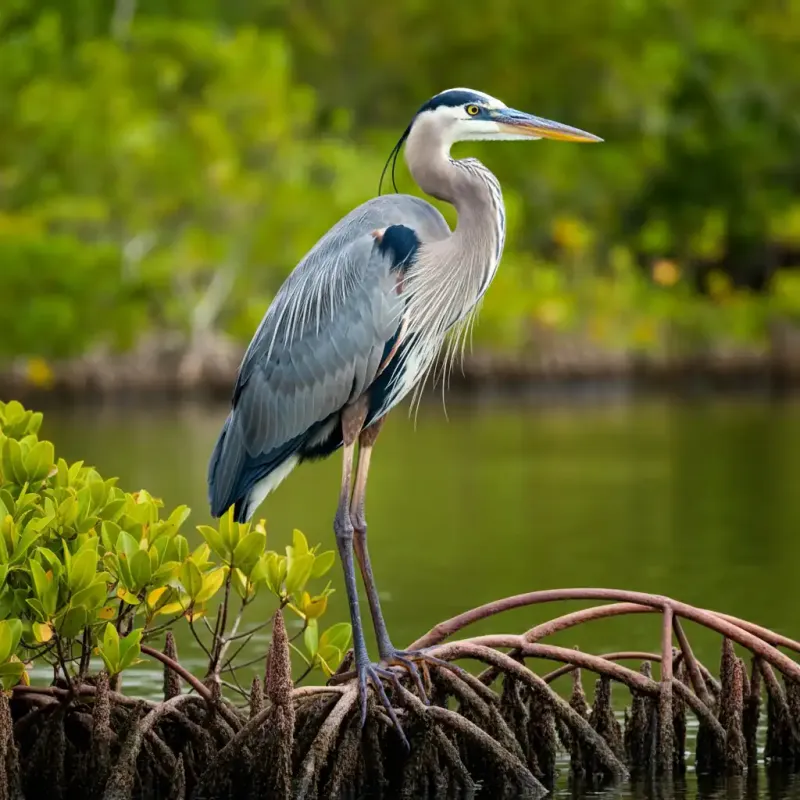
The Great Blue Heron, with its striking silhouette, is often found in Missouri’s wetlands and along its rivers. Renowned for their patience, these birds stand motionless, waiting to spear fish with their sharp beaks.
Their impressive wingspan allows for graceful flight, making their takeoff a breathtaking scene. Herons play a critical role in the ecosystem by controlling fish populations.
Observing a Great Blue Heron in its natural environment offers a tranquil moment of connection with Missouri’s aquatic landscapes.
Eastern Chipmunk
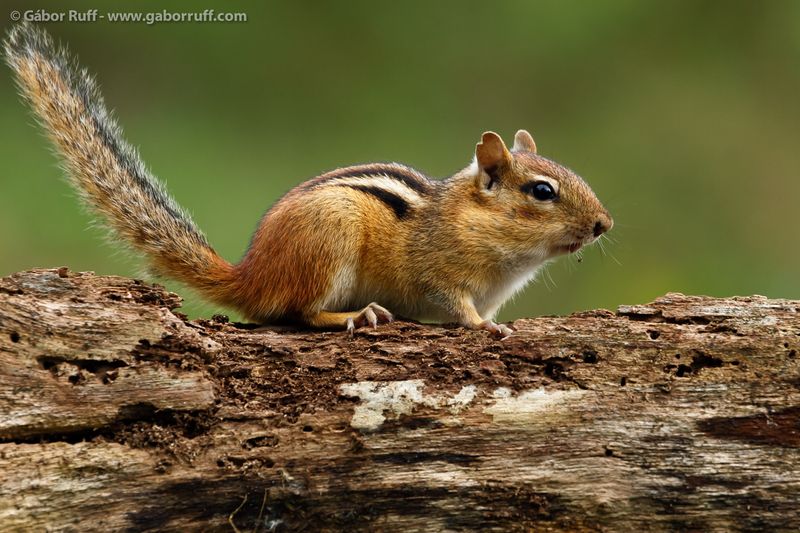
Energetic and endearing, the Eastern Chipmunk is a small rodent often seen scurrying through Missouri’s woodlands. Known for their cheek pouches, chipmunks collect and store food for winter.
These creatures are constantly on the move, their striped backs making them easily identifiable as they dart between bushes and trees. Chipmunks communicate through a series of chirps and calls, adding a lively soundtrack to the forest.
Their presence adds a playful element to Missouri’s diverse woodland ecosystems.
American Black Bear
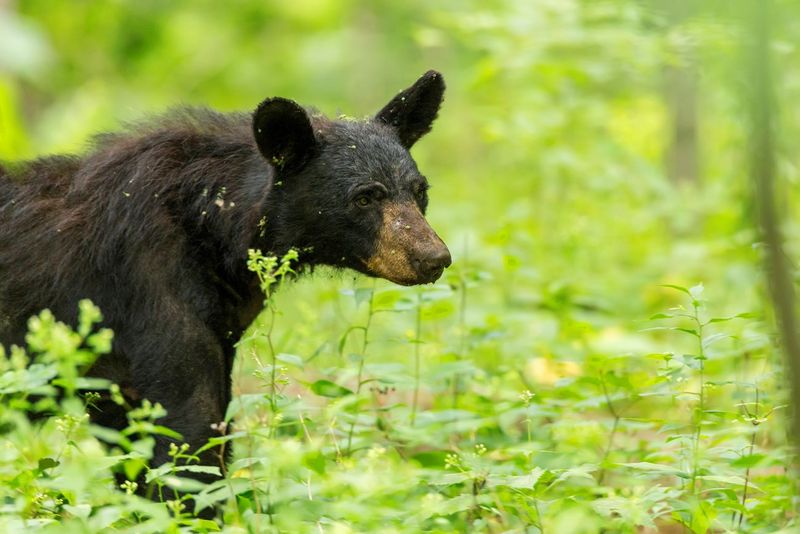
The American Black Bear, once rare, is now increasingly seen in Missouri’s wildlands. These bears are omnivores, foraging for berries, nuts, and small mammals.
With their keen sense of smell, they can locate food from great distances. Black bears are mostly solitary, except for mothers with cubs, which adds to their elusive nature.
Spotting a black bear in Missouri offers a thrilling glimpse into the state’s growing wildlife populations and conservation successes.
Barred Owl
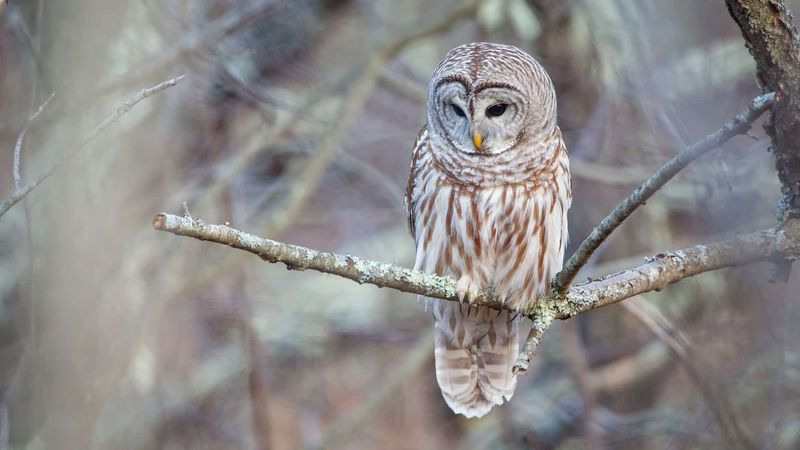
The Barred Owl, known for its haunting call, inhabits the dense forests of Missouri. These nocturnal birds are adept hunters, preying on small mammals and birds.
Their large, round eyes and distinct facial markings make them a favorite among wildlife enthusiasts. Barred Owls are often heard before they are seen, their calls resonating through the night.
Observing these owls offers a unique insight into the nocturnal lives of Missouri’s forest creatures.
Prairie Kingsnake
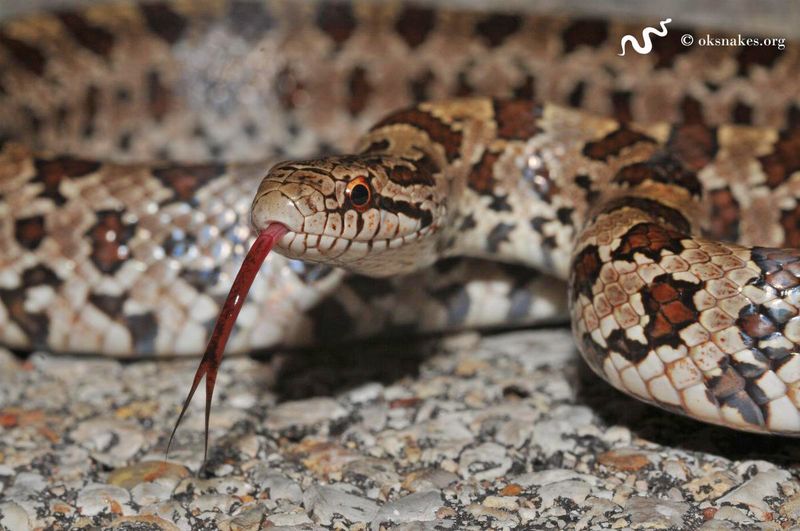
Non-venomous and beneficial, the Prairie Kingsnake is a valuable resident of Missouri’s grasslands. Known for its striking pattern, this snake preys on rodents, helping control pest populations.
Kingsnakes are known to eat other snakes, including venomous ones, which contributes to their reputation as beneficial predators. Their adaptability allows them to thrive in various habitats across Missouri.
Encountering a Prairie Kingsnake offers a look at the intricate balance of the state’s ecosystems.
Prothonotary Warbler
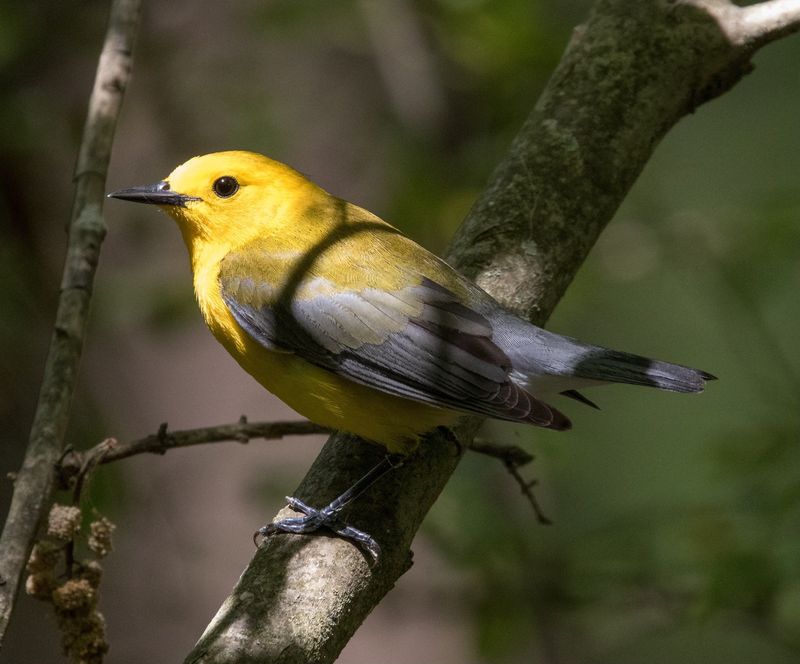
The Prothonotary Warbler, with its bright yellow plumage, brightens the wetlands of Missouri. These small songbirds are often seen flitting among the branches near water bodies.
They are cavity nesters, relying on old trees and stumps to raise their young. Their cheerful songs and vivid colors make them a delight for birdwatchers.
Observing the Prothonotary Warbler offers a glimpse into the vibrant avian life that thrives in Missouri’s wetland ecosystems.
Copperhead Snake
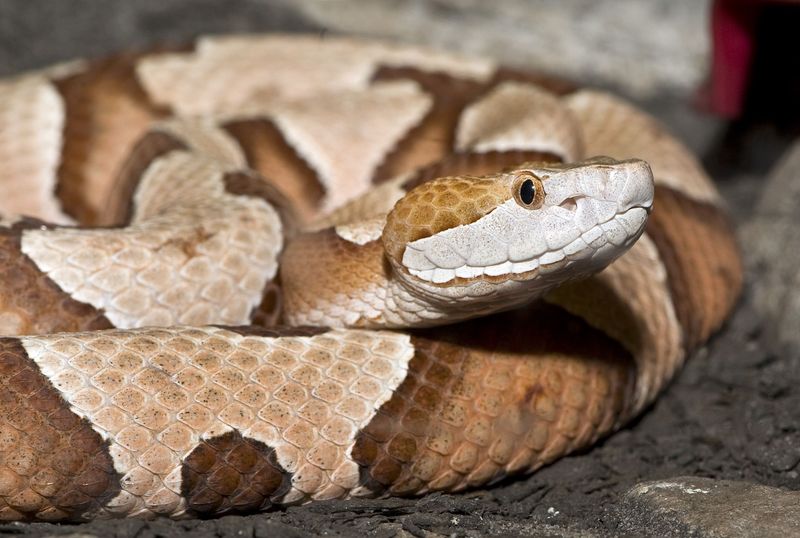
The Copperhead Snake, with its distinctive copper-colored pattern, is a venomous resident of Missouri’s forests. Known for their camouflage, these snakes are often overlooked as they blend into leaf litter.
Though venomous, they are not aggressive and will avoid confrontation with humans. Their role in the ecosystem is crucial, as they help control rodent populations.
Spotting a Copperhead, while rare, offers an understanding of the delicate balance within Missouri’s natural environments.
Eastern Bluebird
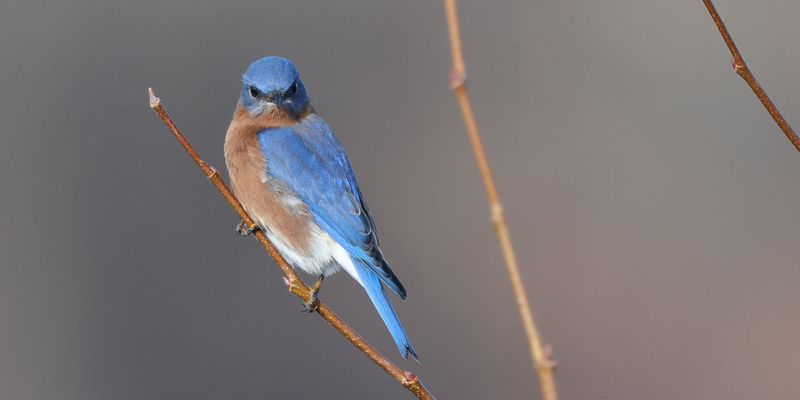
Symbolic of happiness and hope, the Eastern Bluebird is a beloved sight in Missouri’s meadows and gardens. With its vivid blue and orange feathers, this bird is easily recognizable.
Bluebirds are cavity nesters, often found in wooden birdhouses or natural tree hollows. Their cheerful song adds a musical touch to the rural landscape.
Observing an Eastern Bluebird offers a connection to Missouri’s avian beauty and the joy of nature.
American Bison
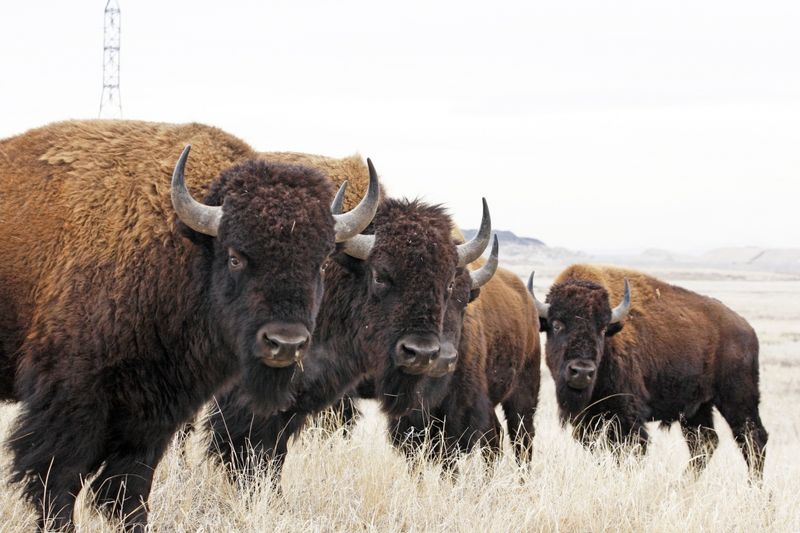
The American Bison, once roaming in vast herds, is now a symbol of conservation success in Missouri. These massive mammals are known for their strength and resilience.
Grazing on prairies, they play a role in maintaining grassland ecosystems. Bison herds are a powerful sight, representing a connection to the American wilderness.
Encountering a bison in Missouri is a reminder of the state’s commitment to preserving its natural heritage.
Nine-banded Armadillo
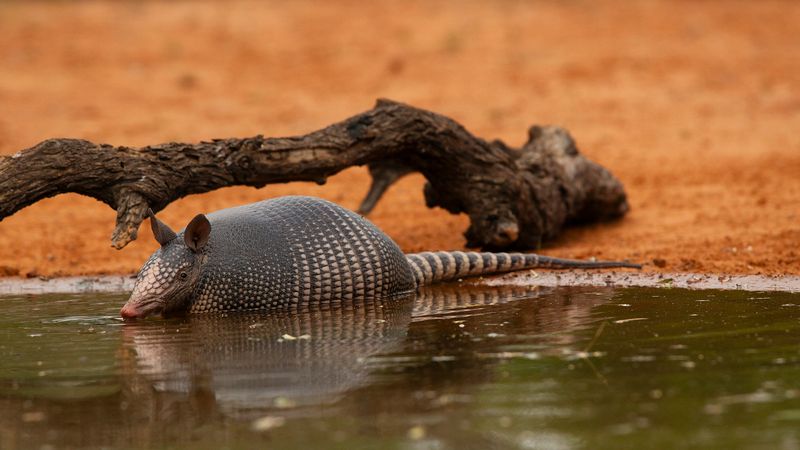
The Nine-banded Armadillo, with its distinctive armor-like shell, is a curious inhabitant of Missouri’s woodlands. Known for their digging habits, they forage for insects and grubs.
Armadillos have poor eyesight but rely on a keen sense of smell to locate food. Their unique appearance and behavior make them a fascinating subject for wildlife enthusiasts.
Observing an armadillo offers insight into the adaptive strategies of Missouri’s diverse animal life.
Monarch Butterfly
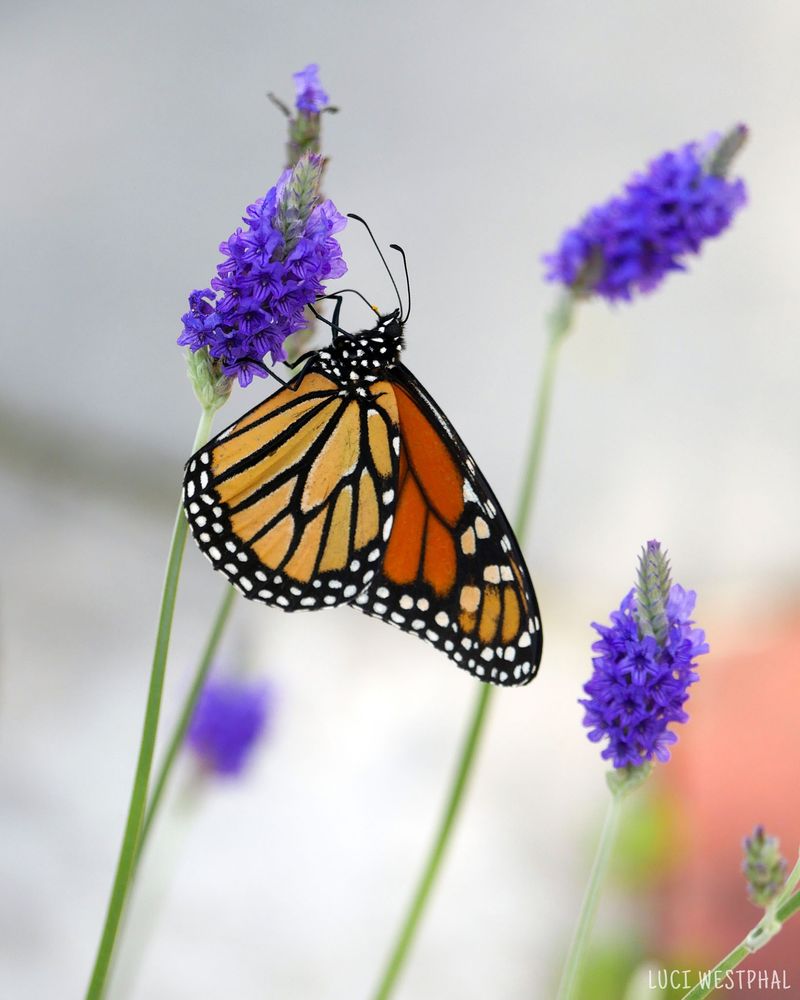
The Monarch Butterfly, with its vibrant orange and black wings, is an iconic presence in Missouri’s fields and gardens. Known for their incredible migration, these butterflies travel thousands of miles to wintering grounds.
Monarchs rely on milkweed plants for survival, as they lay eggs on these plants, providing food for their larvae. Their lifecycle and migration patterns are a testament to nature’s wonders.
Watching Monarch Butterflies flutter through Missouri’s landscapes inspires awe and respect for the natural world.
Peregrine Falcon
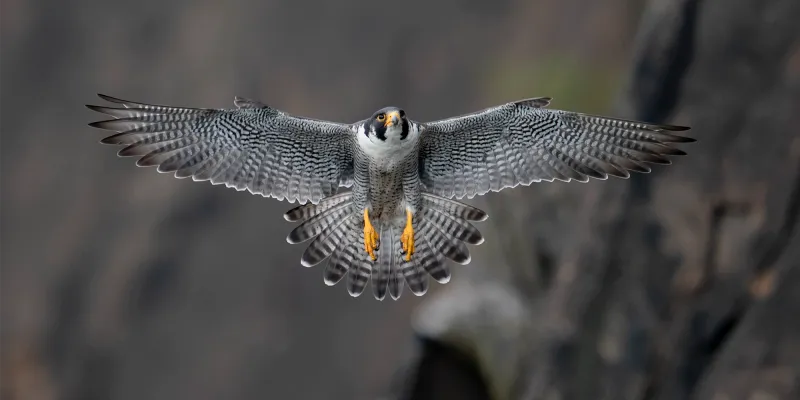
The Peregrine Falcon, known for its incredible speed, is a masterful predator in Missouri’s skies. These falcons are renowned for their hunting dives, reaching speeds over 200 miles per hour.
They prefer high cliffs and urban buildings for nesting, offering them wide views to spot prey. Peregrine Falcons play an essential role in controlling bird populations.
Witnessing a Peregrine Falcon in action is a thrilling experience, showcasing the dynamic nature of Missouri’s birdlife.
River Otter
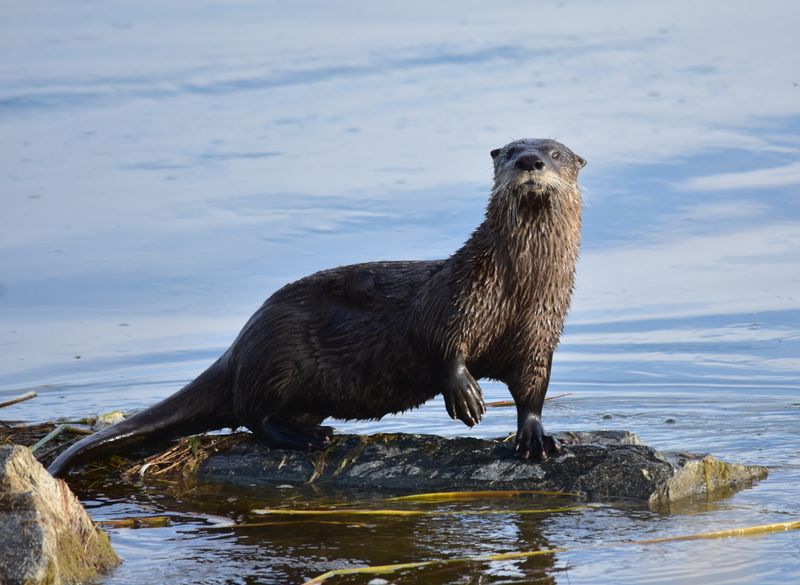
The River Otter, with its playful antics, brings joy to Missouri’s waterways. Known for their sociable nature, otters often travel in family groups.
Their streamlined bodies make them excellent swimmers, capable of catching fish with ease. River Otters are crucial for maintaining healthy aquatic ecosystems, as they help control fish populations.
Observing otters at play offers a delightful glimpse into the vibrant life of Missouri’s rivers.
Tiger Salamander
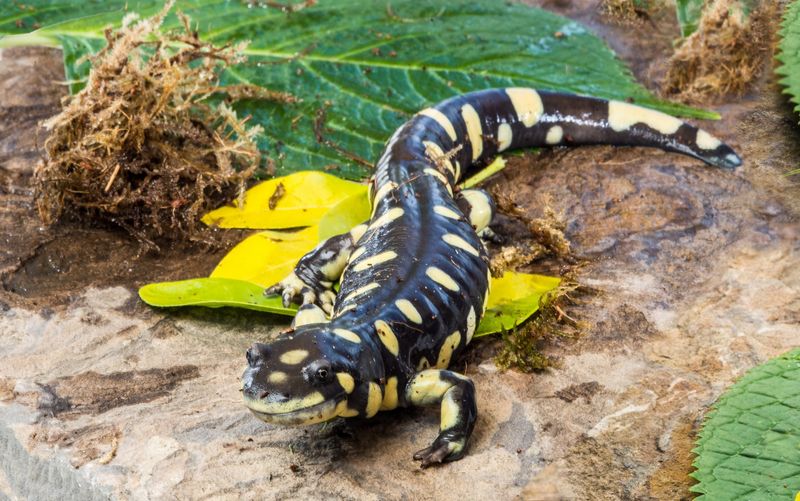
The Tiger Salamander, with its striking yellow and black markings, is a secretive amphibian found in Missouri’s forests. These salamanders spend much of their life underground, emerging to breed in temporary pools.
Their ability to regenerate lost limbs fascinates scientists and nature enthusiasts alike. Tiger Salamanders play a vital role in the ecosystem, keeping insect populations in check.
Discovering a Tiger Salamander in Missouri’s wildlands reveals the hidden complexity of the state’s biodiversity.
Eastern Screech Owl
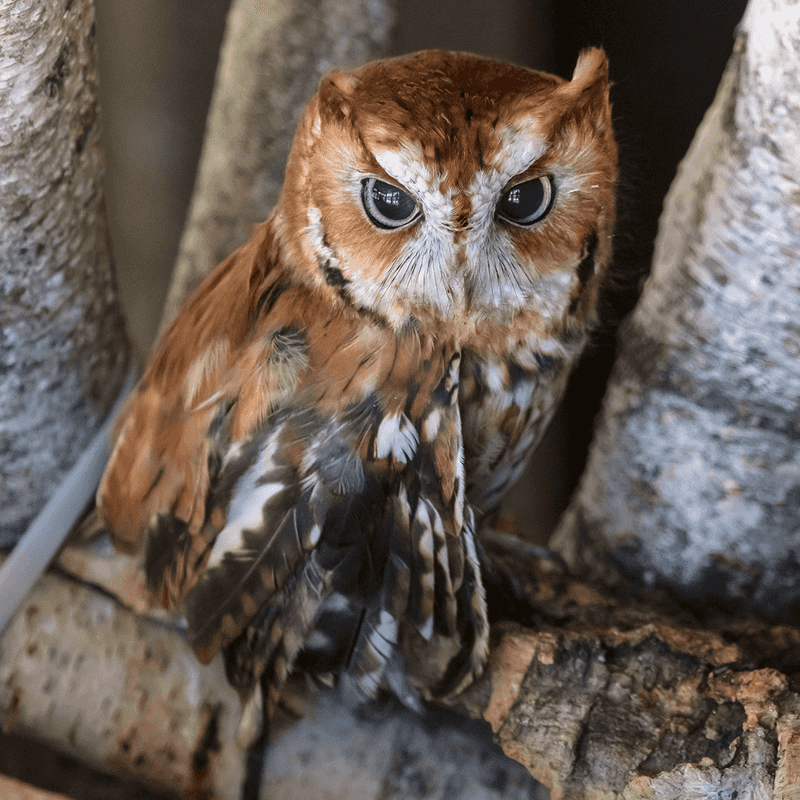
The Eastern Screech Owl, though small, is a formidable predator in Missouri’s forests. Known for their camouflaging abilities, these owls blend seamlessly with tree bark.
Their eerie trills resonate through the night, marking their territory. These owls primarily hunt insects and small mammals, contributing to pest control.
Encountering an Eastern Screech Owl offers an intimate view into the nocturnal dynamics of Missouri’s wildlife.
Electric Blue Cave Fish
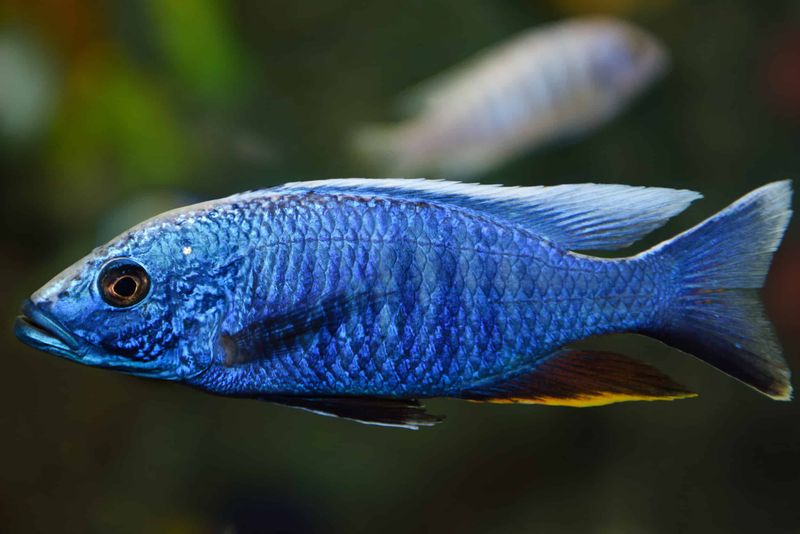
The electric blue cave fish is a dazzling sight, hidden in the depths of Missouri’s vast underground caverns. Unlike any fish you’ve seen, its translucent body glows with an otherworldly electric blue hue.
This remarkable creature navigates the pitch-black waters with ease, using its heightened senses to explore its environment.
Known to locals but rare to visitors, this fish is a true gem of Missouri’s subterranean ecosystems. Its ability to thrive in complete darkness is a testament to nature’s adaptability and ingenuity.
Witnessing this fish is like uncovering a secret, adding a spark of wonder to any cave expedition.

